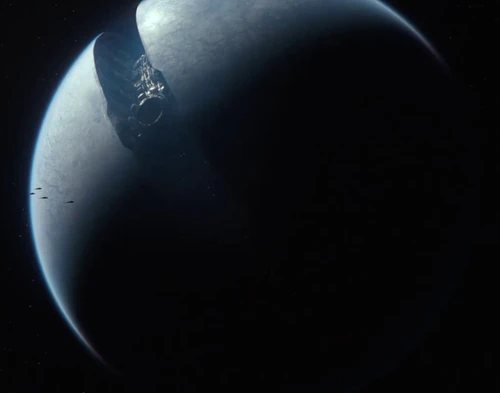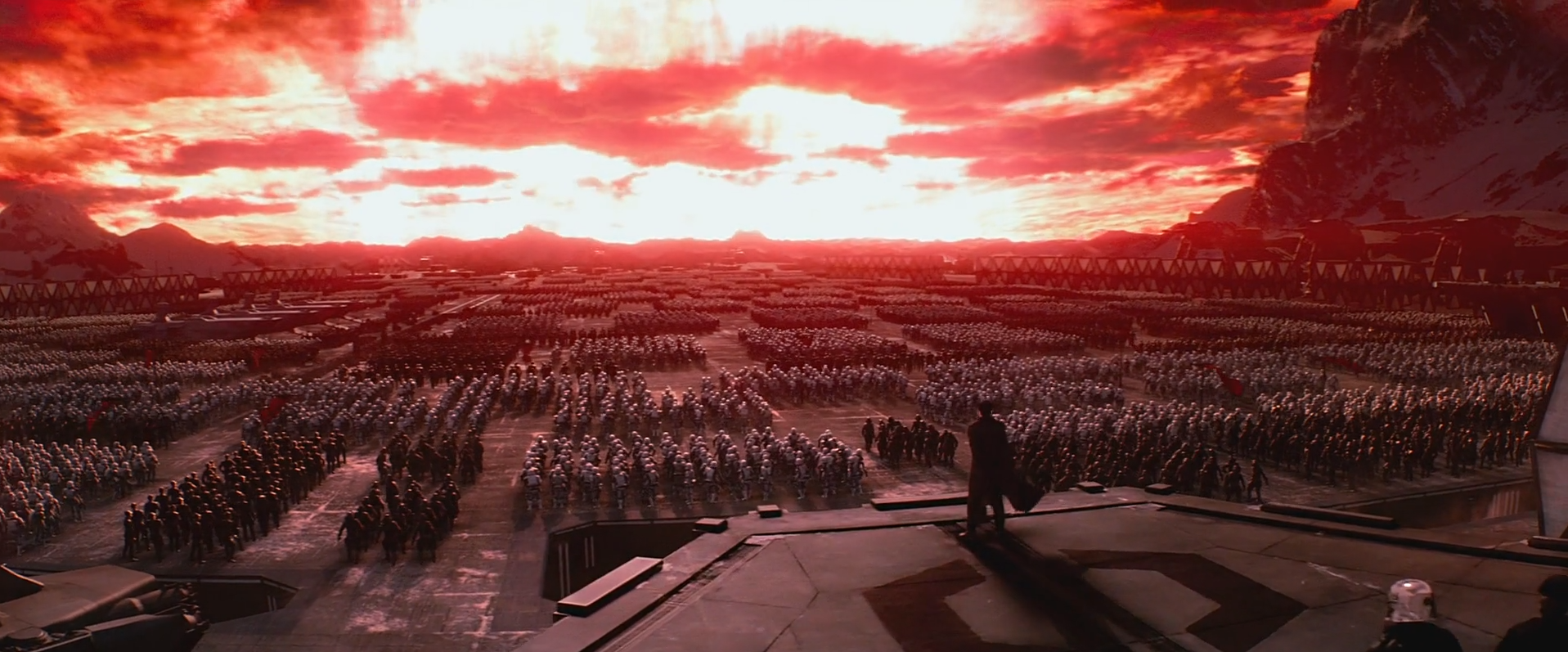 |
| Not to scale, but closer than you think. |
Now it's never specified whether they're talking about the first or second Death Star. According to the recently released nerd-guidebook, Ultimate Star Wars, the first Death Star was 120 km in diameter, and the second was 160 km. So we can estimate that Starkiller is 720-960 km in diameter.
How big is that? For comparison, Earth's moon has a mean diameter of 3474 km, and Earth itself clocks in at 12742 km. Nothing in our solar system that small has any atmosphere to speak of. Yet as is so common in science fiction, the surface could easily be mistaken for Canada.
Now maybe planets are just smaller in movies directed by J.J. Abrams? It would explain some of the plot contrivances in his Star Trek movies. But let's just this once give Abrams the benefit of the doubt and try to explain this. I think that this planet was terraformed as the weapon was constructed around it. Why? Because the only native life we see on the surface is coniferous forest. Exactly the kind of plants you would use to recycle carbon dioxide into oxygen if you knew the artificial environment you were establishing would be very cold (say, lacking sunlight for long periods of time). I mentioned last time I discussed this movie that I thought the planet's environment made sense because of periodic lack of sunlight, and this conclusion seems to resonate with that one.
Suppose Starkiller began as an airless, lifeless rock. This makes sense; when you've drawn up the plans for a superweapon built around a planet, you need a very specific set of geological properties in order for your giant gun not to blow up in your face upon the first firing, and the First Order seemed very confident that this would not occur because the planet had not been evacuated before it destroyed the Republic capital.
 |
| "AAAAAH! MY EYES!" |
In fact, now that I look again, that trench they gouged out of the planet looks much too deep to not have hit the planet's mantle if it were a copy of Earth. Smaller bodies lack geological activity, so that's another point in favor of my theory; the First Order probably needed an object small enough to be completely solid.
Furthermore, since your weapon needs to be mobile (a fact we can assume even if we don't take supplemental Star Wars material into account because it eats stars for ammunition), smaller is better. I don't know how hyperdrives work, but I'm going to go out on a limb and assume that more massive objects are harder to move in hyperspace, same as in normal space.
So how did we get from barren moonlet to Canada? Well take another look at that big trench they dug into the planet. Where did all that rock go? I imagine the Star Wars galaxy has technology where one can reduce mined rock to its constituent molecules or atoms, then separate gaseous elements from the silicon and metals, and release those gases - carbon dioxide, molecular nitrogen and oxygen - into the environment, generating an atmosphere. Then those trees I mentioned earlier were planted to ensure all troops, staff, and radar technicians would be able to breathe indefinitely.
So there you have it: terraforming exists in the Star Wars galaxy. Now you can point to this whenever someone asks you why there are so many livable planets in the movies.